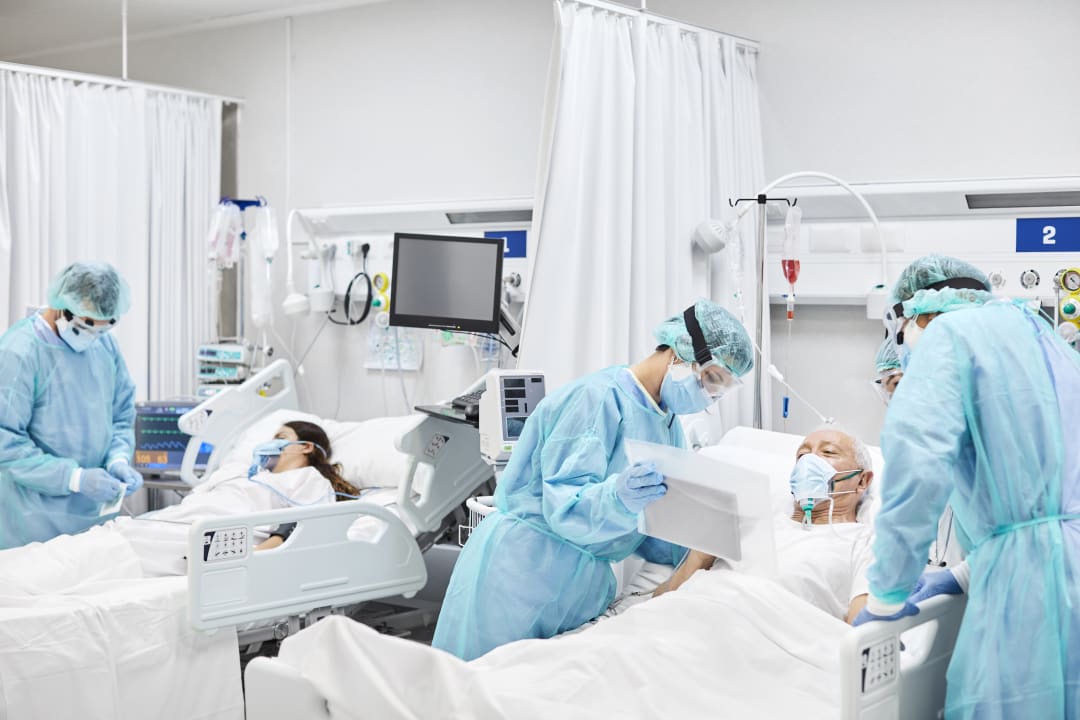COVID-19 Frontline Perspective
Design considerations to reduce risk and support patients and providers in facilities for COVID-19 care

Developed in partnership with doctors, nurses, scientists, and healthcare administrators working on the frontlines of the pandemic, this resource addresses the unique challenges imposed by COVID-19, which are only broadly addressed by infectious disease protocols in standard disaster plans.
The frontline whitepaper highlights clinicians' perspectives about what they need to care for patients and the care givers themselves. Areas to consider when designing, adapting, or modifying healthcare facilities during the COVID-19 pandemic include:
- the benefits of consultation with medical and subject-matter experts
- critical information about specific COVID challenges that need to be met during space planning and design of health care facilities.
- how providers’ health and well-being, along with patient outcomes, are dependent on key elements in the environment and built conditions.
The frontline checklist includes considerations for designing, planning, programming and adapting operational features including:
- the need for a network of clinician design consultants at the institutional, national, regional and local levels
- emergency management disaster plans for overcapacity, patient volumes, and staff shortages
- spaces, utilization, and resources to accommodate patient flow that may overwhelm resources
- flexible utilization planning for emergency departments, intensive care, operating and specialty facilities
- airflow handling and layouts for negative pressure isolation
- aerosolization procedures and risks, considering positive pressure flow
- isolation from entry through triage, testing, diagnoses, and immediate bedding or separation
- creating spaces for different patient cohorts and levels of acuity in symptomatic, asymptomatic and persons under investigation for COVID-19
- circulation to separate “clean” from “contaminated” flow of people and supplies, and provide spaces for personnel to help manage flow throughout the facility.
- spaces for staff teamwork, mentoring, processing and managing the traumatic experience of this disease, including technology for remote telemedicine
- staff spaces for psychological support, rest, respite, and recovery
- infection control features such as additional sinks and shoe washing
- spaces for environmental services, supplies, and workers
Image credits

